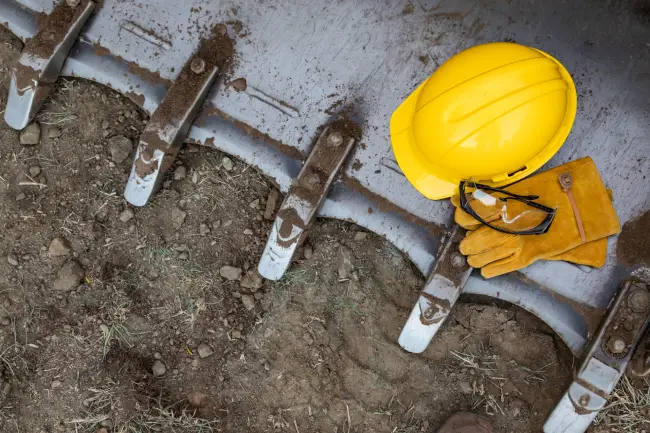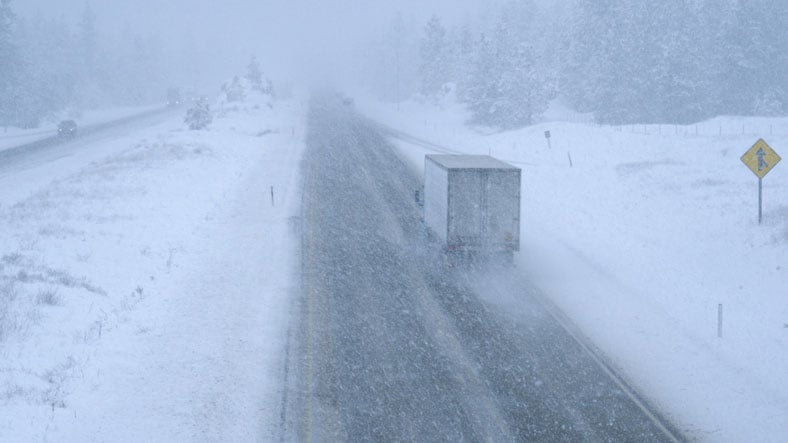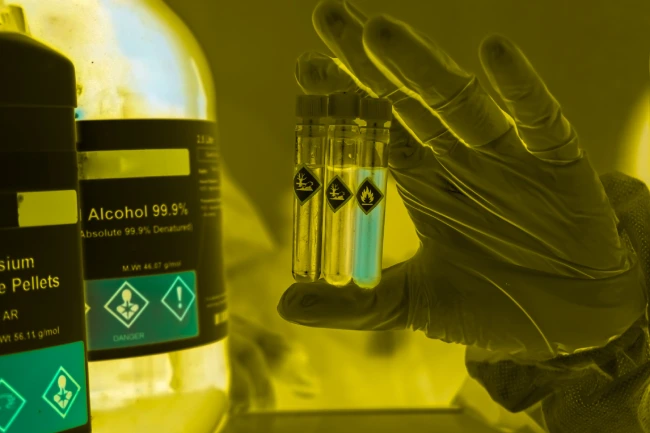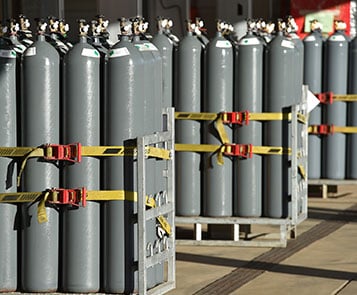Real-Time Environmental Monitoring Solutions Protect Communities
It's an exciting time for the United States building industry, which is seeing an uptick in demand for commercial and infrastructure construction projects.
Simultaneously, communities that host the growing number of construction and remediation sites want assurance they aren’t impacted by chemicals or dust—and that noise levels remain under reasonable thresholds.
Exceeding safety thresholds is problematic, as it can cause a project to shut down until the on-site team remedies the issue. Compliance and public safety, in addition to their other services, are great competitive advantages for environmental consulting or engineering firms. Fortunately, there are partners who can help with environmental remediation services for those firms that don’t want the added burden.
The overall United States construction market is massive and expanding. In 2022, it hit $2.1 trillion in value, and will grow at an estimated 4% average annual growth rate (AAGR) between 2024 and 2027, according to research firm GlobalData. These statistics include the residential, commercial, industrial, energy and utilities, and infrastructure market segments.
Environmental Construction Hurdles
While these are encouraging statistics, there are still major hurdles for the commercial and infrastructure building industry segments. Today, governments and the public are demanding greater vigilance for environmental safety. Subsequently, environmental consulting-engineering companies must be extremely diligent to protect workers and the public from dust and other worksite byproducts.
Even the perception, accurate or not, that there is airborne contamination or some other violation can shut down a project—potentially causing serious construction time and cost overruns. Clearly, staying compliant without missing deadlines is crucial for success. In a recent Triumvirate Environmental poll asking what the biggest barriers to construction projects were, respondents replied thus:
- For most respondents (52%), time and cost overruns were their number-one concern
- For 17%, it was compliance with the federal Environmental Protection Agency (EPA)
- Occupational Safety and Health Administration (OSHA) compliance and local regulation breaches were tied at 15% each
Avoiding unneeded shutdowns requires more than environmental guesswork. Rather, project managers must have an easily accessible and indisputable single source of data to ensure nothing unnecessarily entangles the project.
Solutions to Monitor the Environment
The reliable and accurate reading of a site’s environmental conditions requires specialized precision hardware-software solutions. These can be complex, and require extensive maintenance to ensure they function properly once deployed in the field. Also, they typically need special personnel and tools to extract the environmental data, consolidate it, and share it in a meaningful way, in real time.
These essential (but costly and intricate) systems can be a distraction for engineers who want to focus on design and execution. Fortunately, there are environmental remediation support services partners available, like Triumvirate Environmental.
Companies such as ours offer extensive personnel, technology, and support capabilities to ensure smooth engineering project execution and completion. We’ll review two of our successes below—allowing you to see what we can do for you.
Downtown Baltimore Office Building Project
Again, according to GlobalData, the commercial construction segment will see an uptick in activity. One of the drivers is the growing post-COVID-19 tourist trade—which will feed the hospitality and leisure building sectors. Further powering construction growth is an expansion in the retail market, which will require more store space.
At Triumvirate Environmental, we already have a solid commercial construction track record. For instance, we handled environmental remediation monitoring services for a multistory, multiphase office building project sited next to downtown Baltimore’s harbor.
Pollution fears: The office building site was in a densely packed area, adjacent to marinas, roads, commercial buildings, and residential neighborhoods. Members of the downtown community worried that dust would escape into the air and become a public risk.
Further complicating the project was the presence of hexavalent chromium waste under the surface cap—which would be disturbed when the team laid the building’s substructure. The potential presence of fog and unexpected sea winds (both could carry pollution) were also threats. Finally, there were other nearby sources of particulate emissions, not related to the office building project. These could make site readings confusing.
Official safety demands: State and federal regulators also had concerns. In particular, the EPA wanted an effective and efficient way to conduct real-time measurements of construction and site perimeter emissions—enabling the project team to control potential dust releases.
To enable compliance, the site's consulting engineering firm contracted with Triumvirate Environmental. Subsequently, we deployed our proprietary Greenlight™ Environmental Monitoring System. The Greenlight™ solution leverages wireless telemetry capabilities to feed environmental data, in real-time, to a cloud server. The system measures chemical contaminants and the signs of other hazards and reports key findings to appropriate personnel, who can take proactive action.
Monitoring station deployment: The Triumvirate Environmental team provided six fixed-perimeter air monitoring stations—with four placed around the entire project site. The team placed another station at the National Aquarium, as it was being a sensitive receptor. The sixth was placed away from the site, at a city fire station (for ambient conditions).
Team members also deployed a full-feature weather station and two wind speed and direction sensors—to measure varying wind flows that impacted the site. Additionally, each day, eight mobile air monitoring stations equipped with particulate monitors were deployed on-site, close to the work activities. These locations included active operation sites, soil storage piles, and other at-risk areas.
Real-time, integrated monitoring and reporting: All the Greenlight™ stations could operate automatically and be remotely monitored. For nine months, the perimeter system ran 24/7, with an uptime of 97%. The solution took data feeds from all the stations—including the weather station—and integrated them for review.
Greenlight™ then interpreted the data and matched conditions at the site with preset thresholds. Additionally, the system could identify off-site particulates—and tell them apart from those released on the construction site. Next, the solution live-streamed results to end users, permitting the project to continue safely.
Ultimately, the accuracy of Greenlight™ enabled the project team to continue—without unnecessary forced construction shutdowns.
Major New York Bridge Construction
Another major construction subsector we actively support is that of infrastructure building—which comprises rail, road, and similar project types. GlobalData notes that the $1.2 trillion Infrastructure and Jobs Act (IIJA) will be a major factor in keeping the construction industry growing from 2023 to 2030.
We also have a strong resume in this market—one of our most high-profile customers is the New York State Thruway Authority (NYSTA). The agency had slated the construction of a riverine bridge in New York linking two residential communities. But, the bridge construction would likely cause noise, vibrations, and dust release.
The NYSTA assured the adjacent residential communities the bridge would have only a minimal environmental impact on them. This meant the NYSTA (through a construction consortium) was obliged to provide real-time environmental monitoring in the communities at each end of the future bridge. This demanded coverage of a large area—much bigger than a typical construction site.
Dust and sound monitoring: The construction consortium turned to us to help with this task. Our team installed 12 fixed environmental monitoring stations at strategic locations in residential neighborhoods, near sensitive receptors (such as public parks), and along roadways. The overall system operated automatically, with users monitoring it remotely. This eliminated the need for on-site personnel to manage and maintain the solution—saving the project an estimated $5 million-plus.
The monitoring stations measured a variety of parameters, including dust levels. The devices were set to measure two particle size ranges that could affect human health (PM10 and PM2.5). Additionally, they monitored real-time noise levels—and recorded any sounds exceeding the noise threshold. They also took real-time seismograph readings and sent out alerts if vibration levels exceeded project thresholds.
Team members developed a comparative trend analysis threshold measurement capability. This tool could evaluate the particulate concentrations of all six stations on both sides of the river. The solution could pinpoint the concentration levels of each station—and compare it to the other five stations.
Robust data gathering: The environmental monitoring stations operated 24/7 from June 2013 to July 2020, with a 99.5% uptime. The solution annually gathered 10 million sampling data points around noise, vibrations, dust, and weather conditions. The stations fed the data into our Greenlight™ Environmental Monitoring System.
The solution integrated the information streams with meteorological readings from two weather stations (one on each side of the river). The system then live-streamed the monitoring results to project personnel. And, at 30-minute intervals, it also uploaded information in graph format to the project’s public website.
Smooth project execution: The data it collected enabled the Greenlight™ System to provide immediate feedback to project team members. In turn, this allowed them to respond to potential dust and sound level risks. On an ongoing basis, the data collected showed that the bridge construction activities had minimal adverse environmental impact to the community.
Environmental Remediation Support Services for You
Are you working on a construction or reclamation project that demands monitoring and measuring sensitive environmental data types? We offer a broad and deep continuum of capabilities to ensure your project goes according to plan and budget, from safety to training to monitoring. Learn more by visiting our Environmental Remediation Support Services page, or contact us today.
Interested in reading more about our remediation services? We have a case study about a landfill, another about manufactured gas plant (MGP) remediation sites, and a third covering our success at a Superfund site.






